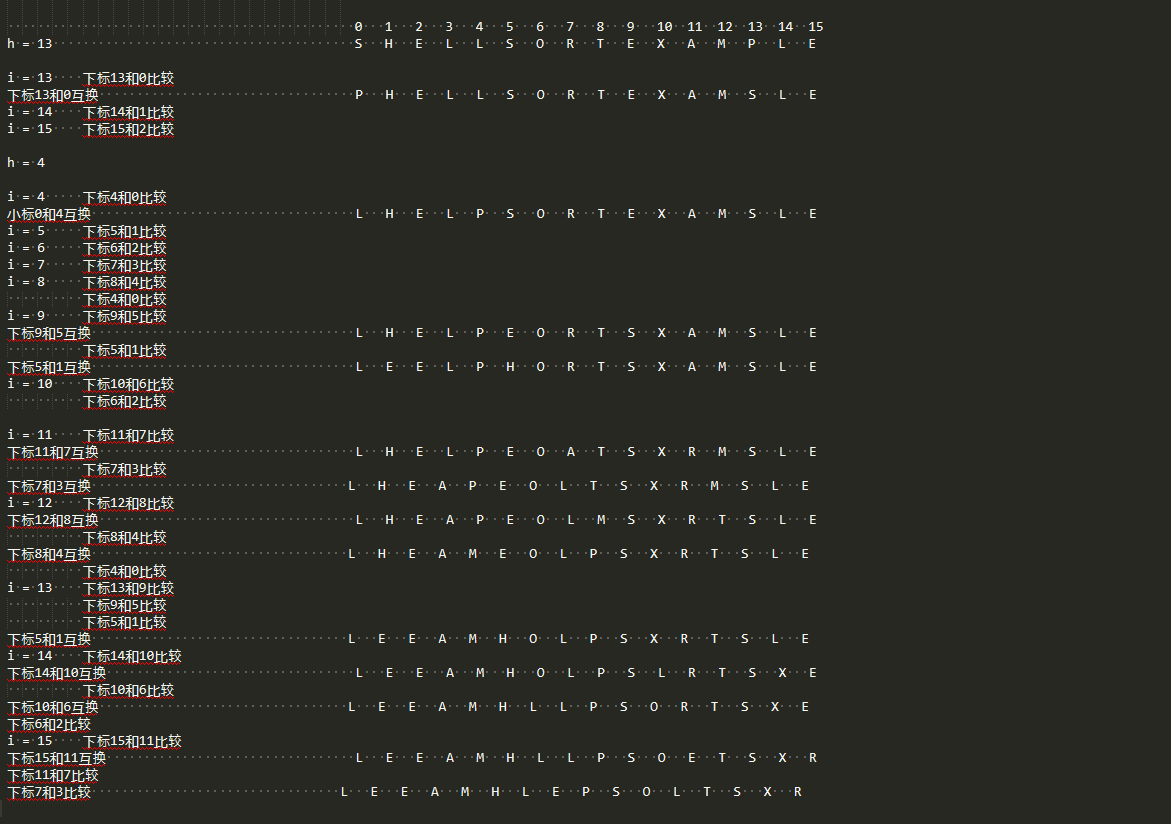salesforce零基础学习(七十九)简单排序浅谈 篇一
我们在程序中经常需要对数据列表进行排序,有时候使用SOQL的order by 不一定能完全符合需求,需要对数据进行排序,排序可以有多种方式,不同的方式针对不同的场景。篇一只是简单的描述一下选择排序,插入排序以及插入排序优化版--希尔排序。
一.选择排序
选择排序的中心思想为第一轮找到数组中最小的值,将最小值和第一个元素交换位置,第二轮找到剩余数组的最小值,将其和第二个元素交换,以此类推。
选择排序的特点如下:
1.比较次数:n * (n-1) / 2
2.交换次数:N
4.运行时间和输入无关
5.数据移动次数是最小的,每次移动都只会改变两个数组的值
apex不像java,基础类型类似Integer,String等均没有实现Comparable接口,所以方法中均已Integer类型进行处理,有兴趣的可以自行修改成Comparable或者其他类型。
1 public static Integer[] selectionSort(Integer[] datas) { 2 Integer dataLength = datas.size(); 3 for(Integer i = 0;i < dataLength;i++) { 4 Integer min = i; 5 for(Integer j = i + 1;j < dataLength;j++) { 6 if(datas[min] > datas[j]) { 7 min = j; 8 } 9 } 10 Integer temp = datas[i]; 11 datas[i] = datas[min]; 12 datas[min] = temp; 13 } 14 return datas; 15 }
实现Comparable接口的代码:
1 public static Comparable[] selectionSort1(Comparable[] datas) { 2 Integer dataLength = datas.size(); 3 for(Integer i = 0;i < dataLength;i++) { 4 Integer min = i; 5 for(Integer j = i;j < dataLength;j++) { 6 if(datas[min].compareTo(datas[j]) > 0) { 7 min = j; 8 } 9 } 10 Comparable temp = datas[i]; 11 datas[i] = datas[min]; 12 datas[min] = temp; 13 } 14 return datas; 15 }
二.插入排序
插入排序的中心为对左边的第i(i在1~n之间)项进行排序,保证前i项是有序的,等排到最右边一位,则整个数组变为有序的数列。
插入排序特点:
比较次数:N^2/4
交换次数:N^2/4
所需时间取决于数组元素的初始顺序,如果初始顺序相对有序,排序会快很多
插入排序适用情景:
1.数组中的每个元素距离他的最终位置不远
2.一个有序的大数组接一个小数组
3.数组中只有几个元素位置不正确
实现规则:每一轮都对左边的i项数据进行排序,保证前i项有序
代码如下:
1 public static Integer[] insertionSort(Integer[] datas) { 2 Integer dataLength = datas.size(); 3 for(Integer i = 1;i < dataLength;i++) { 4 for(Integer j = i; j > 0 && datas[j] < datas[j-1];j--) { 5 Integer temp = datas[j-1]; 6 datas[j-1] = datas[j]; 7 datas[j] = temp; 8 } 9 } 10 return datas; 11 }
三.希尔排序
插入排序适用于数组中只有几个元素不正确,但是如果最小的一位如果在数组的最后一位,相当于需要移动N个位置。希尔排序可以用于快速交换不相邻的元素以对数组的局部进行排序,思想为使数组中任意间隔为H的元素都是有序的。一个H有序数组就是H个互相独立的有序数组放在一起形成的一个数组。如果H很大,我们就可以将元素一次移动到很远的地方。H取值可以取2,3,4...n
关于希尔排序可以查看:https://baike.baidu.com/item/%E5%B8%8C%E5%B0%94%E6%8E%92%E5%BA%8F/3229428?fr=aladdin
下面代码描述为当H为3的排序 元素的间隔规律为a[n+1] = a[n] + 3 ^ n
public static String[] shellSort(String[] datas) { Integer dataLength = datas.size(); Integer h = 1; while(h < dataLength/3) { h = 3 * h + 1;//1,4,13,40 ... } System.debug(LoggingLevel.INFO, '*** h: ' + h); System.debug(LoggingLevel.INFO, '*** dataLength: ' + dataLength); while(h >= 1) { for(Integer i = h;i < dataLength;i++) { //将a[i]插入到a[i-h],a[i-2h],a[i-3h] ....中 for(Integer j = i;j >= h && datas[j] < datas[j-h];j -= h) { String temp = datas[j-h]; datas[j-h] = datas[j]; datas[j] = temp; } System.debug(LoggingLevel.INFO, '*** i: ' + i); } System.debug(LoggingLevel.INFO, '*** datas: ' + String.valueOf(datas)); System.debug(LoggingLevel.INFO, '*** h: ' + h); h = h / 3; } return datas; }
当数组为 S H E L L S O R T E X A M P L E 情况下,使用H为3的每次运行如下图,图不全,内容自己补充。

运行后,可以将数组排成升序的有序列表。
总结:此三种排序方式,单纯效率考虑的话,可以使用希尔排序,优化了插入排序的不足,同时没有特别的占用内存。篇二会描述一下其他排序方式。额,题外话,还是不太希望今天有人看到这篇博客的,祝大家七夕快乐。
作者:zero
博客地址:http://www.cnblogs.com/zero-zyq/
本文欢迎转载,但未经作者同意必须保留此段声明,且在文章页面明显位置给出原文连接
如果文章的内容对你有帮助,欢迎点赞~
为方便手机端查看博客,现正在将博客迁移至微信公众号:Salesforce零基础学习,欢迎各位关注。




